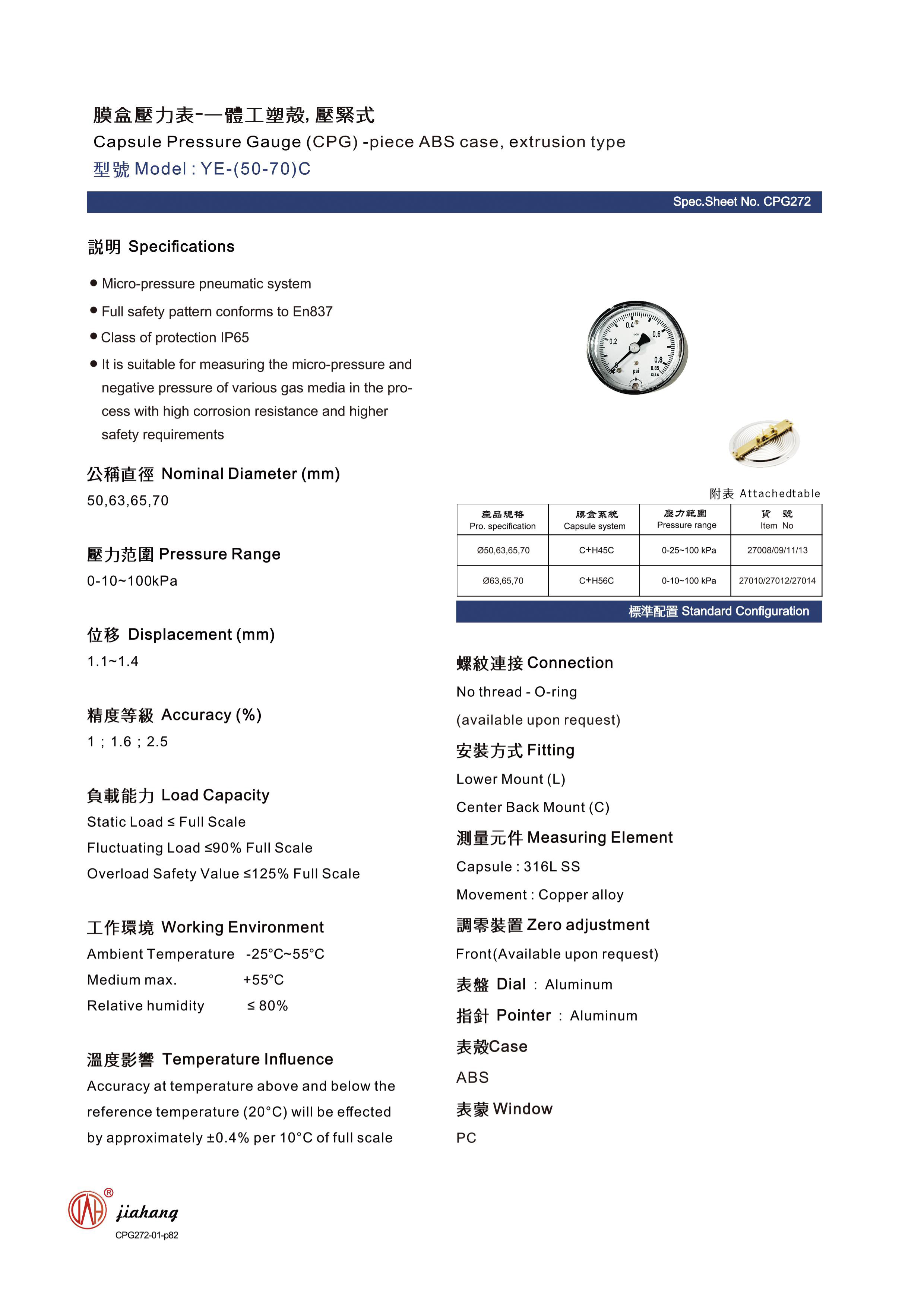
Dec . 19, 2024 03:35 Back to list
difference between differential and absolute pressure gauges service
Understanding the Difference Between Differential and Absolute Pressure Gauges
Pressure measurement is a fundamental aspect of many industrial processes, influencing operations across sectors such as manufacturing, oil and gas, pharmaceuticals, and water treatment. Two commonly utilized instruments for measuring pressure are differential pressure gauges and absolute pressure gauges. While both serve the purpose of quantifying pressure, they do so in fundamentally different ways, and understanding these differences is crucial for selecting the appropriate gauge for specific applications.
Absolute Pressure Gauges
Absolute pressure gauges measure pressure relative to a perfect vacuum, which is considered to have zero pressure. In other words, these gauges provide readings based on the total atmospheric pressure plus the pressure exerted by the gas or liquid being measured. This makes absolute pressure gauges ideal for applications where the measurement must remain unaffected by changes in atmospheric conditions.
One of the critical applications of absolute pressure measurement is in environments where precise control is necessary, such as in vacuum systems, aerospace engineering, and some laboratory experiments. For instance, in vacuum technology, knowing the absolute pressure is essential for processes like evaporation, sublimation, and freeze-drying. Absolute pressure gauges typically use a sealed reference chamber to measure the pressure, which allows them to provide consistent readings irrespective of fluctuations in atmospheric pressure.
Differential Pressure Gauges
In contrast, differential pressure gauges measure the difference in pressure between two points. This type of gauge is essential for applications where understanding the pressure drop or difference across a system is critical. For example, in HVAC systems, differential pressure gauges are used to monitor filter conditions by measuring the pressure drop across air filters, allowing for timely maintenance and improved efficiency.
Differential gauges work by connecting two separate pressure inputs—one to the point of interest and the other usually to the atmosphere or another reference point. The difference in the pressure values is displayed, enabling users to assess changes in pressure dynamically. This type of gauge is particularly useful for process control, flow measurement, and level measurement in various industries.
difference between differential and absolute pressure gauges service

Key Differences
The primary distinction between differential and absolute pressure gauges lies in their reference points. Absolute pressure gauges reference a vacuum, while differential pressure gauges compare two pressure values. This fundamental difference leads to various applications and selection criteria based on the intended use.
1. Reference Point Absolute gauges measure against a perfect vacuum (0 psi), providing an absolute value of pressure. Differential gauges measure the difference between two pressures, which can be within the same system or between a system and environmental pressure.
2. Applications Absolute pressure gauges are ideal for monitoring vacuum systems, altimeters in aviation, and applications requiring strict pressure measurements unaffected by atmospheric changes. Differential pressure gauges are best suited for flow measurements, filter monitoring, and pressure drop across equipment like pumps and compressors.
3. Response to Pressure Changes Absolute pressure gauges give a direct reading that is consistent regardless of atmospheric pressure variations, while differential pressure gauges can fluctuate based on changes occurring in either of the measured points, necessitating continuous monitoring.
Conclusion
Selecting between a differential pressure gauge and an absolute pressure gauge largely depends on the specific requirements of the application at hand. An absolute gauge is essential when precise pressure readings relative to a vacuum are required, especially in controlled environments. On the other hand, differential pressure gauges are invaluable in process industries for monitoring flow, efficiency, and overall system performance.
In summary, while both types of pressure gauges play critical roles in various applications, understanding their differences is vital for effective pressure measurement and control. The right choice can enhance operational efficiency, ensure safety, and maintain product quality across diverse industrial sectors. Therefore, engineers and technicians must consider their specific needs and the characteristics of the pressures being measured before making a decision.
-
High-Precision Mass Diaphragm Pressure Gauge - Reliable & Durable Solutions
NewsJun.10,2025
-
Explain Diaphragm Pressure Gauge Expert Guide, Top Manufacturers & Quotes
NewsJun.10,2025
-
Affordable Differential Pressure Gauge Prices in China Top Manufacturers
NewsJun.10,2025
-
Reliable Water Fire Extinguisher Pressure Gauges for Safety
NewsJun.10,2025
-
Durable Diaphragm Protection Pressure Gauges Get Quote
NewsJun.09,2025
-
WIKA Differential Pressure Gauge with Switch Reliable Monitoring & Control
NewsJun.09,2025
